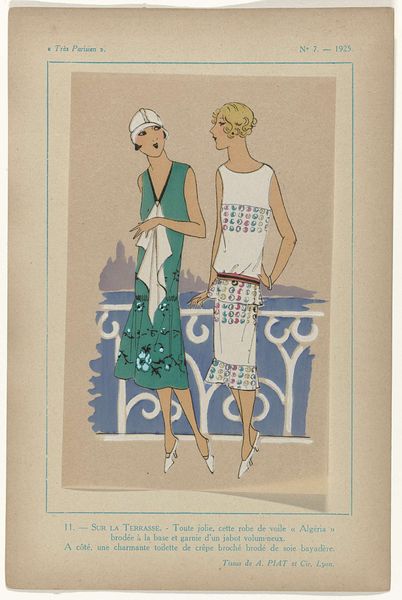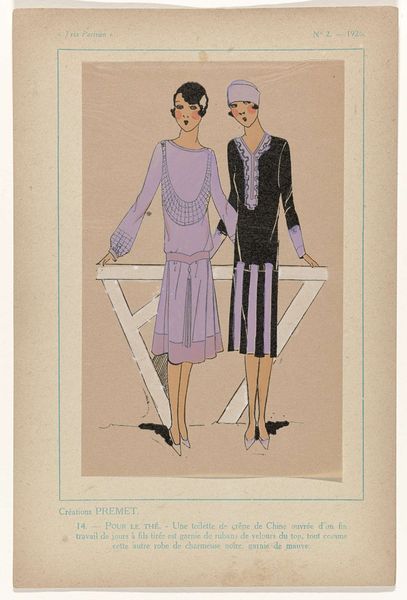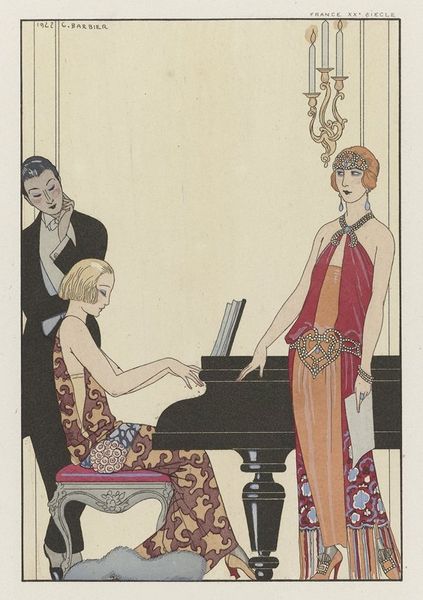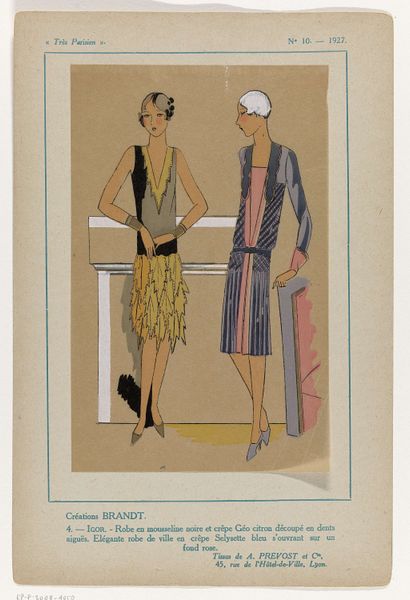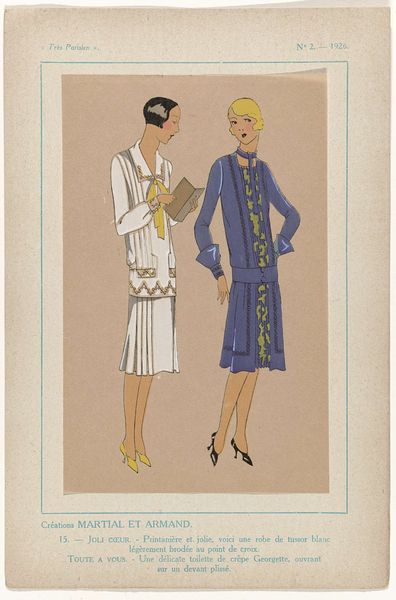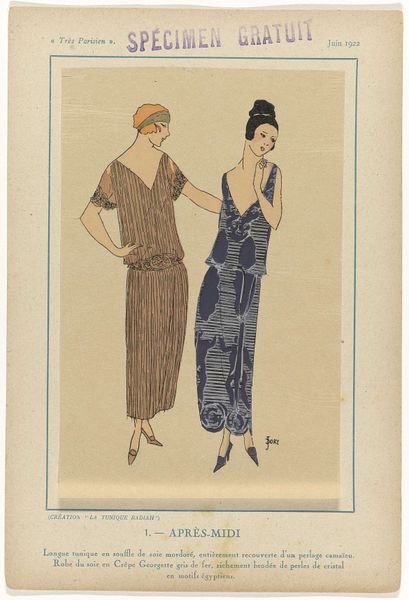
Dimensions: height 269 mm, width 180 mm
Copyright: Rijks Museum: Open Domain
This fashion plate, "Très Parisien," probably made with ink and watercolor, presents such an interesting set of contrasts. The bodies, faces and limbs of the figures are filled in with soft flat areas of pale pink, contrasted with the black dresses, which are filled with hard vertical lines. These lines are echoed in the linear treatment of the cushions on which one figure sits. I particularly love the curls of the hair of the figure who's standing, the way the curves suggest volume with such economical, minimal means. These graphic details read like shorthand, and they remind me of the work of artists like Laura Owens, who use patterns and lines to suggest form, or Ericka Beckman whose animations have a similar quality of artifice. It’s all part of an ongoing conversation about the multiple ways we experience the world, through both representation and abstraction, which I find so fascinating.
Comments
rijksmuseum about 2 years ago
⋮
Très Parisien promoted itself as chic and elegant. Between 1920 and 1936 it presented creations by such couturiers as Chéruit, Premet, Philip et Gaston, and Lanvin. The young, svelte models are all ultra-modern, shown talking on the phone, smoking and playing tennis. The illustrations also show that over the course of the 1920s, skirt lengths had risen to just below the knee, before dropping back down to calf length in the 1930s. The small plates were printed on transparent paper using a stencilling technique known as en pochoir and then hand coloured; many of them are unsigned. The signature ‘Joujou’ belonged to Germaine Paule Joumard, who was the director of Très Parisien, as well as one of the magazine’s illustrators.
Join the conversation
Join millions of artists and users on Artera today and experience the ultimate creative platform.
